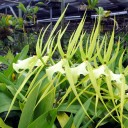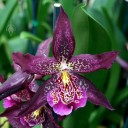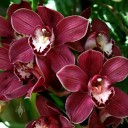You may not like spiders, but you’ll like Spider Orchids. Brassias’ long, delicate petals resemble arachnid legs, and their muted color patterns help complete the effect. (Note that these Spider Orchids are different than the Australian Caladenia orchids with the same common name.)



Many Brassias are fragrant, and sport large, graceful blooms. The flowers of some varieties reach 16 inches (41 cm) tall, with hues of yellow, brown, purple, maroon, and white. In the wild, Brassias mimic spiders well enough to trick spider-hunting wasps into attacking their flowers. The wasps try to sting the blooms, but help pollinate them instead.



Brassias are native to Central and South America, including Florida and parts of the Caribbean. They’re closely related to Oncidiums and Adas, and often crossbred. Many hybrids carry spidery Brassia traits, with hybrid names like Miltassia, Brassidium, Odontobrassia, Beallara, Aliceara, and many more.



Some Brassia varieties want warm temps, but many are intermediate growers. Often they require ample space for their enormous blooms. Brassias have the same care needs as Cattleyas: bright light, including some full sun, regular water, high humidity, fertilizer, and winter dormancy. As easy growers, there’s no need to be afraid of these spiders.



































